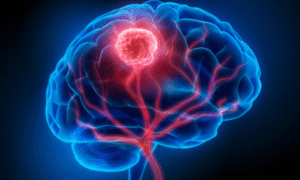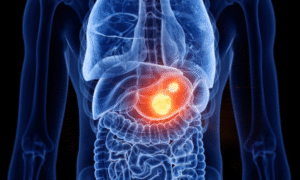Head and Neck Cancer is a group of cancers that develop in the mouth, throat, larynx, nose, or sinuses. These cancers can affect vital functions like speaking, breathing, and swallowing, making early diagnosis essential.
Patients often notice a head and neck cancer lump, unexplained pain, or changes in voice before seeking medical help. But understanding the stages of this cancer is just as important as knowing its signs.
At our cancer hospital in Bangalore, we have seen how learning about stages helps patients make informed treatment choices. Each stage tells us how advanced the cancer is and guides doctors in planning therapies.
In this blog, we will simplify the stages of head and neck cancer and explain what each stage means for patients. Keep reading, you will discover insights that could change how you look at early warning signs and treatment options.
Head and Neck Cancer Reasons

The exact head and neck cancer reasons vary, but certain risk factors are well known:
- Tobacco and alcohol use – The leading causes.
- Human papillomavirus (HPV) infection – Strongly linked with throat cancers.
- Poor oral hygiene can increase the risk.
- Family history of cancer – Raises susceptibility.
- Occupational exposure – Chemicals, asbestos, and dust can contribute.
These reasons highlight why prevention and awareness matter as much as treatment.
Head and Neck Cancer Types
There are several head and neck cancer types, depending on the area affected:
| Type | Area Affected | Common Symptom |
| Oral Cancer | Mouth, gums, tongue | Non-healing mouth sores |
| Oropharyngeal Cancer | Throat, tonsils, base of tongue | Difficulty swallowing |
| Laryngeal Cancer | Voice box | Persistent hoarseness |
| Nasal & Sinus Cancer | Nose, sinuses | Blocked nose, frequent bleeding |
| Salivary Gland Cancer | Salivary glands | Facial swelling, dry mouth |
Each type has unique symptoms, but lumps, pain, and difficulty swallowing are common warning signs.
Understanding the Stages
Cancer staging tells us how far cancer has spread. It guides both treatment planning and prognosis.
| Stage | Description | Common Symptoms |
| Stage 1 | The tumor is small, limited to one area | Lump, mild pain |
| Stage 2 | The tumor grows, but hasn’t spread far | Voice changes, visible swelling |
| Stage 3 | Cancer spreads to nearby tissues or lymph nodes | Severe pain, difficulty swallowing |
| Stage 4 | Advanced stage with distant spread | Breathing issues, weight loss |
Head and neck cancer stage 3 is a turning point; it usually requires surgery, radiation, and sometimes chemotherapy. At this stage, early intervention still improves outcomes.
Head and Neck Cancer Pain
Pain is a common and distressing symptom. Head and neck cancer pain can appear as:
- Throat soreness that doesn’t heal.
- Ear pain with no infection.
- Painful swallowing.
- Jaw or facial discomfort.
Persistent pain, especially with a lump, should never be ignored.
Head and Neck Operation
Treatment often requires surgery. A head and neck operation may involve:
- Removing a tumor in the mouth, throat, or larynx.
- Reconstructive surgery for better appearance and function.
- Sometimes, the removal of lymph nodes.
Modern surgical methods aim to preserve speech and swallowing as much as possible.
Head and Neck Cancer Patients and Outcomes
Head and neck cancer patients benefit greatly from early diagnosis. Treatments may include surgery, radiation therapy, chemotherapy, or a combination.
At our cancer hospital in Bangalore, patients receive multidisciplinary care, and oncologists, surgeons, and rehabilitation specialists work together for the best possible outcomes.
The head and neck cancer mortality rate depends on the stage. While early stages have a high survival rate, advanced stages can reduce life expectancy. This is why awareness and early detection are critical.
Tips for Patients
- Don’t ignore small but persistent symptoms.
- Avoid tobacco and limit alcohol.
- Maintain oral hygiene.
- Get screened if you have a family history of cancer.
- Seek a second opinion if symptoms continue despite treatment.
Wrapping Up
The stages of head and neck cancer determine both treatment and survival. From small lumps to advanced tumors, awareness is the key to timely action.
At Dasappa Cancer Hospital, known as the best cancer hospital in Bangalore, we provide world-class care with advanced diagnostics and personalized treatments for every patient.
Remember, cancer detected early is often cancer defeated. Stay alert to warning signs and take action before it’s too late.
FAQs on Head and Neck Cancer
1. What are the symptoms of neck and head cancer?
Common symptoms include lumps, non-healing sores, persistent sore throat, voice changes, painful swallowing, ear pain, and unexplained weight loss. If symptoms persist, consult a specialist.
2. What is the most common head and neck cancer?
The most common type is squamous cell carcinoma, which develops in the lining of the mouth, throat, or larynx. It is strongly linked with tobacco and alcohol use.
3. How to test for head and neck cancer?
Doctors use physical exams, imaging tests like CT or MRI scans, biopsies, and endoscopy to diagnose head and neck cancers. Early medical evaluation is vital for accurate results.
4. What are the main causes of head and neck cancer?
The main causes include tobacco, alcohol, HPV infection, poor oral hygiene, and exposure to harmful substances. Genetics and family history can also increase risk.
5. Can head and neck cancer be cured?
Yes, if detected early. Many patients with stage 1 or stage 2 disease achieve a complete cure with surgery or radiation. Advanced stages may still be managed effectively with combined therapies.







